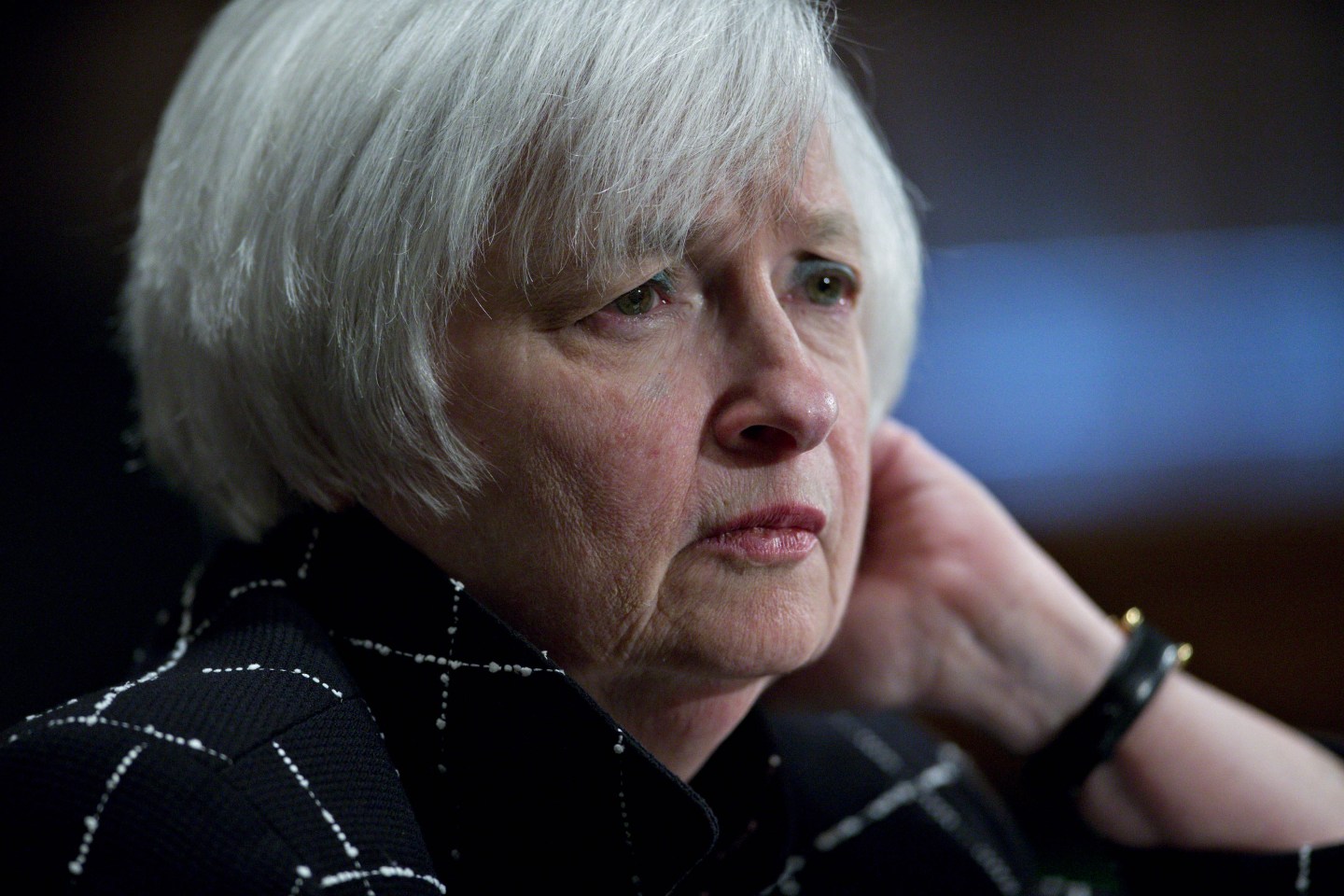A company that gives earnings forecasts is at risk of having to cut its outlook. That’s the problem that is now facing Federal Reserve Chair Janet Yellen. Only in her case, the “stock” is the US economy, and what’s at risk is the entire market, not just the shares of one company.
So say some of Wall Street’s most prominent economists. In a recent paper, David Greenlaw of Morgan Stanley, Peter Hooper of Deutsche Bank, Michael Feroli of J.P. Morgan Chase, Frederic Mishkin of Columbia University, and Amir Sufi of the University of Chicago encourage Yellen and other central bankers to change the way they communicate. While trying to give clarity, they say, she may be backing herself into a corner, creating a risk for the economy. And she may be hurting the Fed’s credibility.
Troubles with the Fed’s message are already cropping up. The market has increasingly become at odds with the Fed’s outlook. Since 2014, traders have suggested the Fed’s “dot plot,” or the chart that pegs the outlook for Fed’s future rate increases based on its forecasts, was off by a percentage point, as a Bloomberg story recently noted. These traders have largely been right. Over the past several quarterly releases, the Fed has continued lowering projections.
As the economy has slowed, this discrepancy has increased. Officials have estimated that their long-run target rate for the overnight lending rate that the Fed sets is around 3.5%. Traders in the derivatives seem to think the Fed’s rate will stay below 2%.
“The Fed’s near term actions versus longer term market reality don’t add up,” said one senior bond trader who declined to be named. “Global and domestic growth are slowing. Central banks in Europe and Japan are easing. The path of least resistance for the world’s safest securities [U.S. Treasury Bonds] is higher prices, lower yields.”
The Fed’s language will have created the illusion of a “reversal” in policy if this is the case, which the study’s economists say is a result of the Fed relying “heavily on what we refer to as ‘time-based’ forward guidance.” The report points to Yellen’s remarks in July 2015, among others. Then, she said, “If the economy evolves as we expect, economic conditions likely would make it appropriate at some p oint this year to raise the federal-funds rate target.”
Although she attaches some caveats to these forecasts (“evolves as we expect”), these disclaimers aren’t typically what the market holds onto. For example, the study notes that press headlines often distill her message to simply say rates will rise by the end of the year.
This type of communication causes two problems. First, it implies the Fed will forge ahead no matter the news, which “in most circumstances is not what the central bank intends.” Second, it “constrains future actions of the central bank.” So if some indicators change unexpectedly, the central bank either sticks with the original action or the changes course, which “hurts its credibility,” the paper says.
The authors of the report suggests Yellen become less specific, or just keep quiet. “They should state their goals and how they intend to achieve them,” says Feroli, “Discussing the economic outlook couldn’t hurt, but I think they should probably stay away from getting too specific on interest rate guidance in the distant future.”
